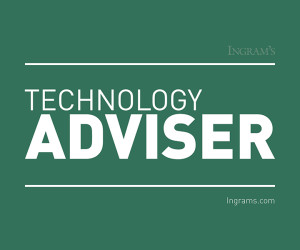HOME | ABOUT US | MEDIA KIT | CONTACT US | INQUIRE
HOME | ABOUT US | MEDIA KIT | CONTACT US | INQUIRE
Automation can be a powerful ally to drive sales and growth.

 In most organizations, the sales process requires multiple, well-timed and targe ated prospect touchpoints to achieve success. The idea that those touchpoints can be managed, executed and improved upon by marketing technology is finding its way into more and more successful businesses.
In most organizations, the sales process requires multiple, well-timed and targe ated prospect touchpoints to achieve success. The idea that those touchpoints can be managed, executed and improved upon by marketing technology is finding its way into more and more successful businesses.
Marketing Platforms (MAPs) are designed to take on repetitive and often tedious sales and marketing tasks. A high-quality MAP will take the most complex sales strategy and make it relatively easy to execute and maintain. 
The best way to understand how marketing automation works is to step through a real-world use case.
In this example, let’s assume your business relies on closing a reasonable number of inbound leads every month. There is a high probability that you can leverage a lead-nurture campaign managed through a MAP to identify and focus on the strongest leads and shorten the sales cycle.
Here’s how your lead-nurture campaign might work. Having been driven to your Web site either directly or through a combination of marketing efforts, a prospect, Joe Cash, fills out an online form requesting additional information, a meeting, product demo and/or pricing information. The online form he filled out is referred to as a lead capture form and it is typically managed through a MAP. At that point, several things happen: Joe is added to your existing CRM (customer and prospect database), he is given a lead score (a method for quantifying the quality of the lead), and a workflow is kicked off by the MAP.
The workflow consists of an immediate automated email follow up that is personalized both to Joe and from his designated sales rep, Rebecca Closer. While the process is completely automated, the email is actually sent by the MAP from Rebecca’s email address so that when and if Joe responds, he will be responding directly to Rebecca. Rebecca will likely also call and try to reach Joe within the first few hours of receiving his initial request.
If Joe doesn’t respond within 24 hours, a second automated email will go out “from” Rebecca asking to set up a time for a follow up call. A third or fourth email may also be automated over the course of several days, weeks, or months to catch Joe at the right time to get a response. Intermittently, Rebecca will be making attempts to call Joe as well. In addition, Joe’s contact information is added to print queues with specifically targeted direct-mail pieces sent to him to help reinforce the messaging that drove him to your business in the first place.
Each time Joe interacts with one of the email campaigns by opening the email or clicking on a link in the email, his lead score is augmented. Rebecca periodically reviews her list of prospects and ranks them by lead score to get an indication of which leads seem to be the hottest so she can focus on them. If Joe’s lead score puts him at the top of the list, he is likely still a strong prospect, even though he has chosen not to respond directly yet.
The MAP workflow will take this into account and can continue to target Joe over a period of several months on Rebecca’s behalf, while she moves on to leads that are more responsive. The result is that the workload of the rep is cut down, the need for highly disciplined sales habits is reduced and, ultimately, more prospects are contacted with better frequency.
Marketing technology can also be leveraged to communicate with existing customers. One common use is to deploy a lifecycle campaign that starts the moment a purchase is made and follows the consumer through the life of the product.
In this case, imagine that you are selling an annual service contract along with a major purchase. A customer buys a new air conditioner for their home and wants to maximize its life expectancy. At the time the new unit is installed, a MAP workflow kicks off. The first email that goes out is both a thank you for your purchase and a request to take a satisfaction survey. Both the email and the survey are managed by the MAP. If a customer gives a low score on their survey response, an alert goes out to a manager to investigate. If the score is good, the workflow continues and sends out a 30-day follow up email to ask the customer how things are going and to solicit a review on one or more review sites.
Throughout the lifespan of the cus-tomer relationship, e-mails are sent reminding the customer to schedule regular maintenance visits, giving tips on maximizing energy efficiency, and perhaps most important, asking and rewarding them for referrals.
MAPs can also engage customers with short surveys to get feedback on the product or the online shopping experience, offer a reminder weeks or months later to prompt a re-order, and reach out to those who have abandoned their on-line shopping carts to salvage the purchase, among other things.
These examples are just the tip of the iceberg. A strong MAP can help execute even the most complex marketing strategy. And if strategy is on point, mar-keting automation really does deliver great results.